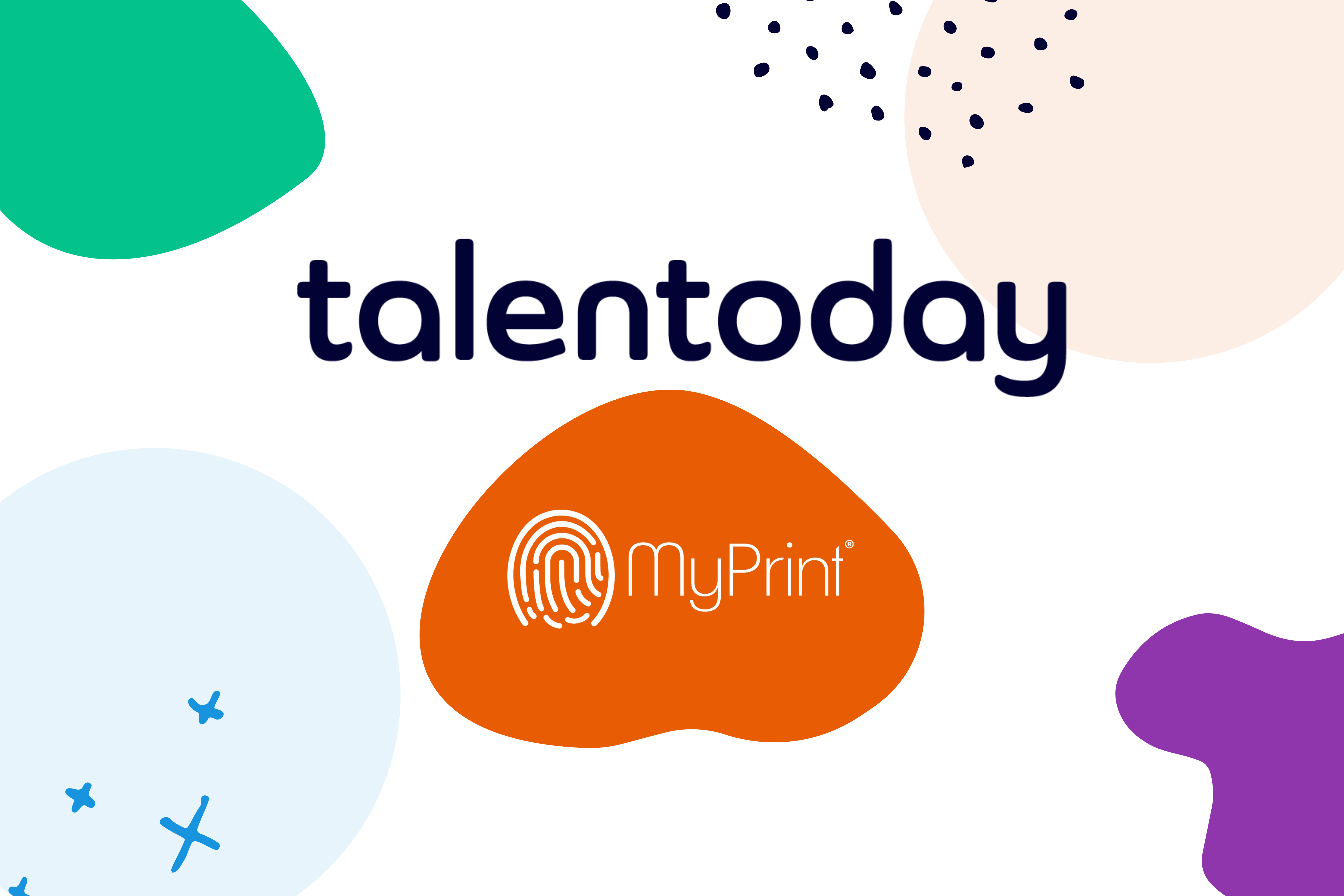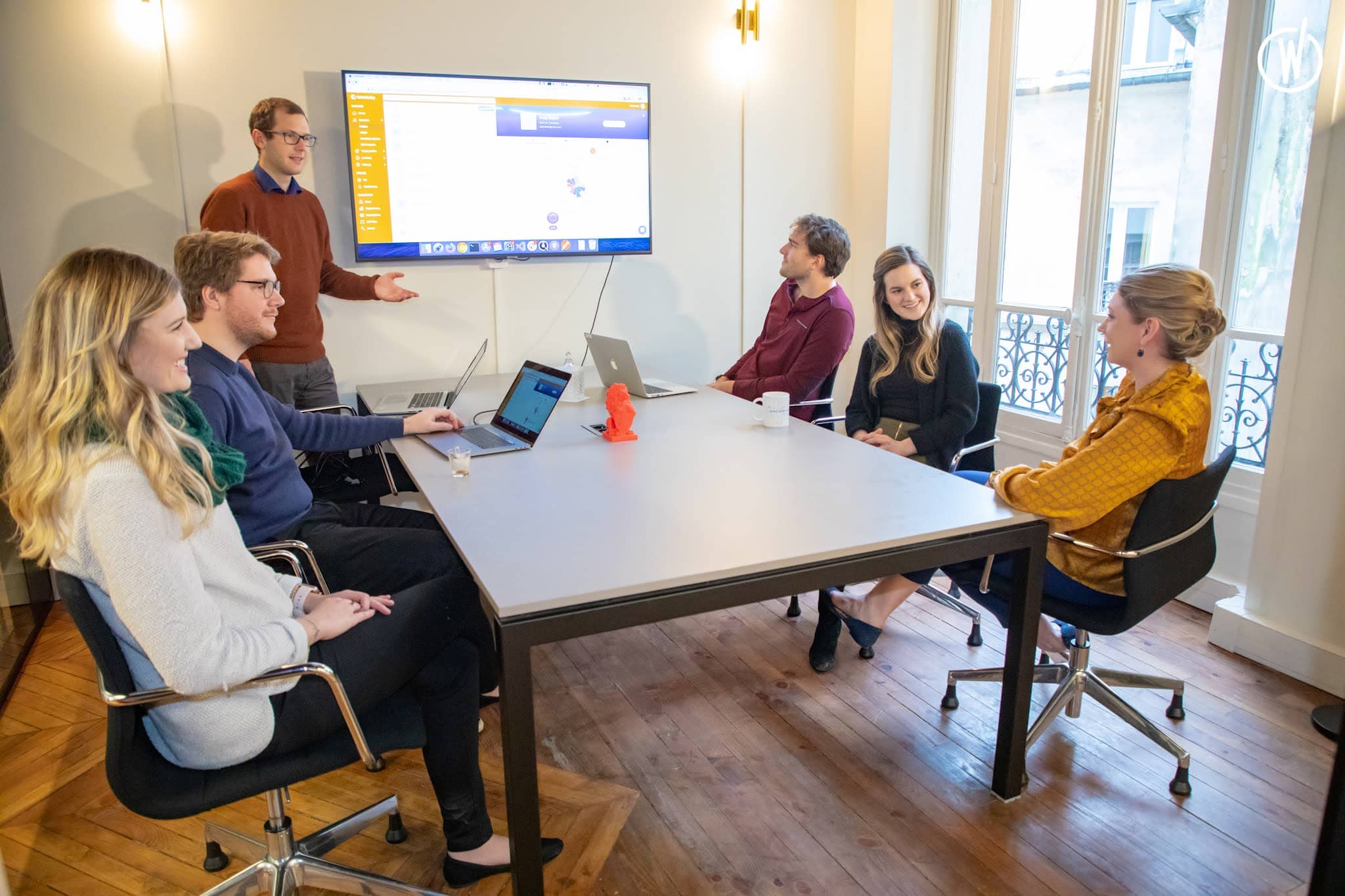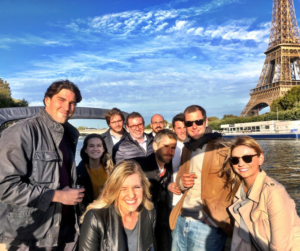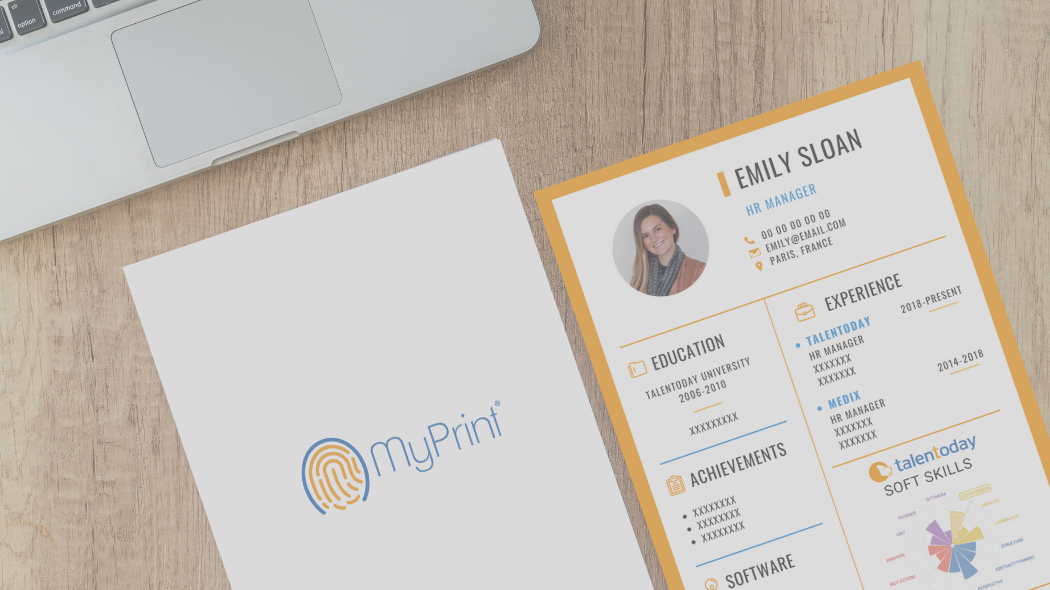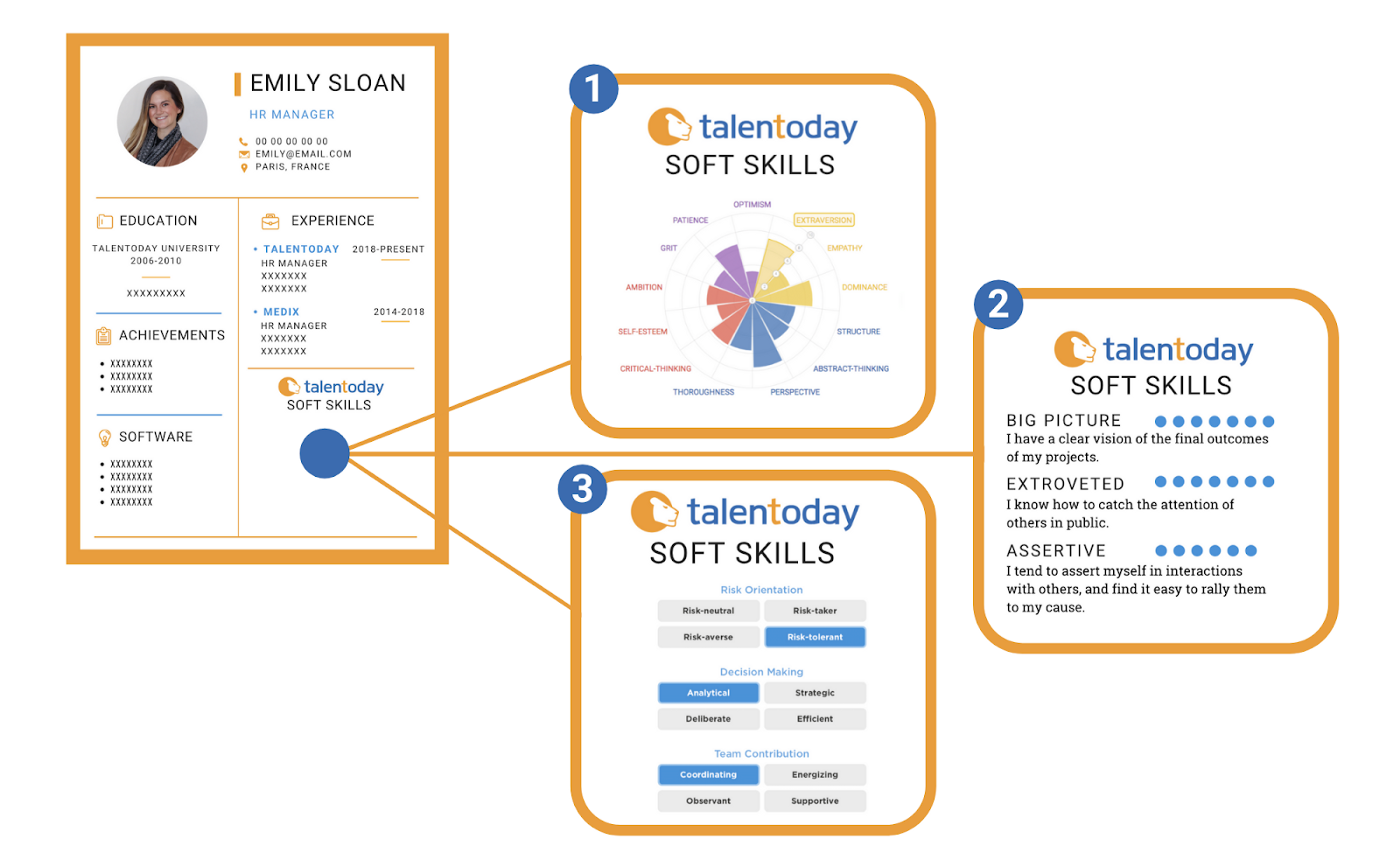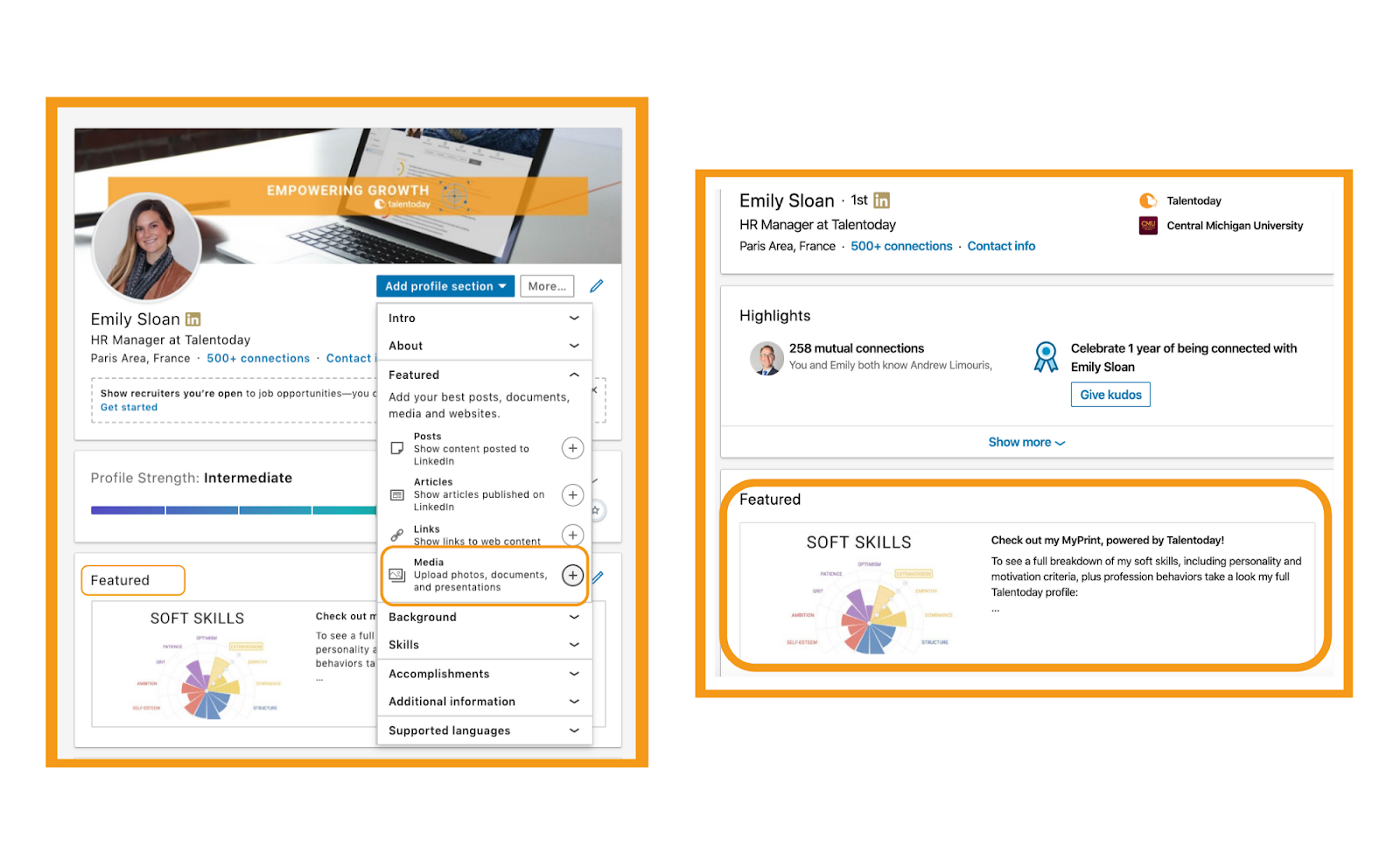Goal Setting Guided by Soft Skills
While there’s never a bad time to set new goals, there sure is something about a fresh new year that boosts motivation! As you take a look at your plans for personal development this year, get a fresh perspective on where you could be going by using your soft skills to guide your goal setting.
Reflect on Where You Currently Stand
When it comes to tackling big goals, it’s important to start with small steps. In order to see how far you have to go, take a look at where you are right now. The skills you possess and the resources you have available can impact the way you set and achieve your goals. Take inventory of what you already have at your fingertips, and keep that into consideration as you determine where you want to go.
Setting Goals with Soft Skills
Next, it’s time to make a plan for what you want to achieve and how you’ll get there. While there are a lot of the goals that might seem like they only require hard skills - such as a certain level of education or required certifications - the truth is that soft skills are the power behind these achievements! By simply being aware of the soft skill strengths you possess, you will be able to better understand how you approach situations and what motivates you, as well as be better equipped to set and reach attainable goals.
Let’s say you want to grow your professional network in the year ahead. Before committing to this goal, it’s important to ask yourself questions about your personality. Are you an introverted person or do you tend to seek a spotlight? If you take the time for self reflection, you can determine what a realistic goal looks like for you and better plan the necessary steps to reach it. For example, if you take a while to warm up around new people, you might make a goal to connect with a certain number of people on LinkedIn each month. However, a more extroverted person might look up conferences or large virtual events that provide an opportunity to dive right into new relationships. Although the end goal is the same, to grow your network, the path to get there might look different from person to person.
Develop a Clear Path Forward
Now that you have a better understanding of where you currently are, take a look at where you want to be and determine a clear path to get there. If you can’t see a plausible way to reach your goal, reevaluate how to set realistic goals in the right direction.
After all, the soft skills you have today can empower your growth tomorrow! Understanding the way you structure your day or what motivates you can help you determine the best way to create a path to your goal. Other goals can be reached by developing soft skills you may not currently use as much. For example, if you have a professional goal to move into a management position at work, you might want to develop some of the most in-demand skills that businesses are looking for when hiring for leadership positions. According to The Balance Careers, these areas of focus can include communication skills, empathy and flexibility.
Whether the path forward utilizes existing skills or is developed with soft skills growth in mind, it’s important to write everything down. Committing to goals mentally is a great first step, but putting them to paper or a digital space helps to make them real. Include checkpoints at regular intervals throughout your journey in order to track progress and adjust goals along the way.
What Are You Waiting For? Get Started!
There’s no time like the present when it comes to self-improvement. Take some time to reflect on the strengths you currently possess, then determine how you can use those skills to get to where you want to be.
Ready to discover your soft skill strengths and improve your goal setting this year? Take our free MyPrint assessment today by clicking here!
How to Cope With Empathy Overload at Work
Do you ever feel like people gravitate towards you to vent? If you hear a coworker telling you about how stressed out they are with their workload, do you offer to lend a hand without considering your own priorities? When making decisions, do you carefully consider the potential impact on others?
If you answered yes to any of these questions, chances are you are a highly empathetic person. The past few months have not been easy for the empaths of the world. Between personal circumstances, situations within your close circle and global events, it is easy to experience empathy overload. It's a condition that can have negative consequences in any setting, especially in the workplace.
Empathy at Work
Every workplace needs empathetic people. In fact, it is often considered one of the most important skills for a successful leader to have. The ability to lead and work with others while anticipating their needs and being aware of their feelings has been shown to have a positive influence on job performance. However, without proper self-care, over reliance on a key soft skill can have negative outcomes.
When empathetic individuals experience a lot of emotional hardships at work, it can lead to burnout. This can come from internalizing the stress of others, having to make important decisions, or even taking on the emotional impact of others’ personal lives. This burnout can lead to a person withdrawing from others, avoiding situations that might create an emotional toll on themselves or even lead to the point of physical distress.
Preventing Empathy Overload
Before getting to the point of empathy overload, take some time to implement some of these preventative measures:
- Practice self-care. Find simple ways to relax and decompress after an overwhelming day. Take a walk, read a book, meditate - find what calms you down and allows you to focus on your own wellbeing.
- Compartmentalize what affects you versus what affects others. It is okay to feel empathy towards others, and it is also okay to take a step back and understand what directly impacts you and what does not.
- Take an objective approach to problems. When making workplace decisions, start by taking an objective look at the facts.
- Be okay with saying no. Empathetic people tend to take on things they cannot handle in order to help others out. It is okay to tell others no sometimes in order to preserve your own energy.
- Communicate your own needs. If you are feeling overwhelmed or burned out, ask for help. Whether this involves pushing back timelines, passing off tasks or taking a day off - let your managers and coworkers know when you need an extra hand.
The World Needs Empathetic People
Feeling like you are overwhelmed by others’ emotions is not a sign of weakness. We need more empathetic people - people who will put the concerns of others first, people who will make others feel seen and heard - in the workplace and in the world. By taking care of yourself and implementing healthy empathy practices, you will be more well-equipped to help others.
Want to learn more about your empathy in a professional context? Take our MyPrint soft skills assessment today at www.talentoday.com.
Welcome to MyPrint: Understanding Your Soft Skills Assessment
The digital world is full of people creating an online persona to market themselves to others in a certain way. Between social media filters, staged photos, and selective sharing of information, what you see is not always the most accurate representation of what a person is truly like. It can be hard to discover your true, unique self, let alone share it with others! That's where utilizing a scientifically-based soft skills assessment can help.
Why are soft skills important?
Here at Talentoday, we love to say that, “Hard skills will get you a job, but your soft skills are what make you great at your job.” Simply said, hard skills are important to get where you want to be in life; earning a degree or certification, gaining work experience, and having the basic knowledge for a position are essential. However, soft skills are the things that will set you apart. How you interact with others, the way you organize yourself and prioritize your work, and being able to adapt to your environment are all examples of soft skills that can lead to career success.
What is MyPrint?
MyPrint is Talentoday’s soft skills assessment that is designed to dive into the personality, motivations, and behaviors that make you unique. The questions are all geared towards the workplace to help you get a better understanding of your soft skills in a professional context.
MyPrint consists of 13 personality dimensions, 11 motivation dimensions, and 11 professional behaviors. The personality and motivation dimensions each have two ends of the scale, called poles, which leads to an output of 26 possible personality traits and 22 different motivators. Each of the professional behaviors has 4 possible styles, leading to information on 44 different behavioral styles. If you’re trying to figure out how many unique results that leads to, we did the math for you: there are over 70.3 trillion possible MyPrint combinations (70,368,744,177,664 to be exact!)
How do I take a MyPrint?
Taking a MyPrint is easier than ever! Simply click here to be taken directly to the registration page. The assessment is free to take, and upon completion you will be able to see your Personality Radar in the application, and your MyPrint One Pager will be available to download.
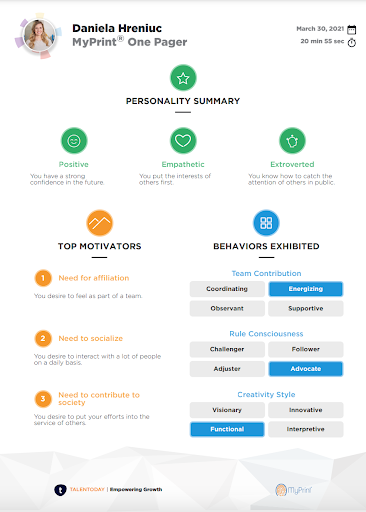
After you have taken some time to view your results, share them! You have the option to share your MyPrint results to multiple social media channels, including LinkedIn, Twitter, and Facebook.
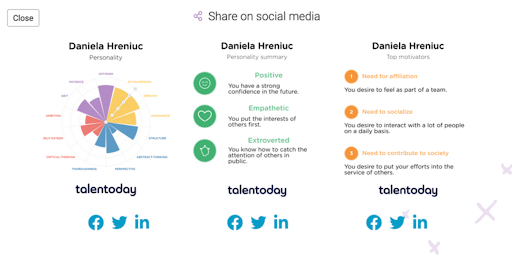
The next time you are looking for a new position, or even looking for more responsibilities or a promotion from your current role, make sure you highlight your soft skills! Use your MyPrint to help showcase the soft skill strengths that make you unique!
Want to learn more about what makes you unique? Visit our website talentoday.com and take a MyPrint assessment today!
How Soft Skills Can Help Students Choose a Major
Making the decision to continue on with your education is a big investment, no matter who you are or what level of education you are pursuing. Even if you are one of the lucky students whose tuition is paid for based on your geographic location or scholarships, the time and work that goes into a successful college career is something that should not be taken lightly.
According to the US Department of Education, 30 percent of students switch majors at least once. Switching majors can be costly and time consuming, so before you just jump into the major that is projected to lead to the highest paying job, here are four steps you can take to make sure it’s the path that is right for you.
Determine which soft skills you already have.
There are so many majors out there that it can be hard to narrow it down. A good place to start is with some self-reflection. Since college is the place to go for the hard skills you will need in your career, one of the best ways to make sure you are choosing the right educational path is to be equipped with the soft skills needed for success.
A good place to start is by thinking of the skills that have made you successful in your previous work and educational experiences. Were you always the organized one in group projects? Maybe your communication skills and patience have helped you in jobs like retail or the service industry. Even the ability to juggle multiple tasks at once can be a key skill that you are already equipped with. Your hard skills will get you the job you are looking for, but those soft skills are what will make you successful in that position.
Which careers need your soft skills?
Once you have taken some time to determine the soft skills that you already possess, a great next step is to find a field or career path that requires those skills. Lucky for you, we have already done some research on this topic at Talentoday! Assessment results from our user database have revealed that there are a lot of soft skills that are transferable across multiple fields. Rather than feeling like your soft skills are narrowing out possibilities, think of them as guiding you in a direction that you will have a natural inclination towards!
Fill in those gaps!
Continuing your education is the time to gain the missing hard skills for your future career, but it’s not too late to develop your soft skills as well. People are dynamic and capable of growth in so many areas of our lives, and your soft skills are no different!
There are a lot of ways that you can work to fill in your soft skill gaps. Being aware of the skills that you want to improve or develop can help you be conscientious about working on those skills. You can also use college to your advantage! Most universities, junior colleges, and online programs offer classes on a variety of topics. Work with an advisor to choose courses that challenge you, rather than opting for ones that already play to your strengths. For example, if you have a knack for research, but have a fear of public speaking, a communication class might be a good fit to begin expanding your soft skills palette.
Take your time.
Lastly, take your time. Although it seems like you need to declare your major immediately, it is okay to do things at your own pace. Most universities will require you to start by taking some general classes of interest before you jump into your declared major. There is no “right” timeline for a decision like this, and it is better to take some time on the front end to make the most of your investment!
Interested in learning more about what soft skills make you unique? Click here to take a MyPrint assessment today!
In Pursuit of Happiness: My Lesson in the Importance of Measuring Motivation
For as long as I can remember, I have had an insatiable urge to maximize my potential for achieving a meaningful and happy life. My mom will recount stories of gritting through the parent-teacher conferences of my adolescence with my teachers cautioning her to put “less pressure” on me due to the intensity I brought to spelling tests and class projects. My mom would assure them that there was no pressure; it was all driven by a little fourth grader with an intense motivation for personal achievement.
Over the years, the devotion to fulfillment of potential never waned. I found myself driven by achievement, influence and responsibility, and I had successfully scouted out professional and educational opportunities to satisfy that. However, I approached a pivotal point in my personal growth when I was by all appearances in the prime of my career, building a life in the United States with a wonderful partner and our loving, loyal pets, leading teams of brilliant people while also pursuing a graduate degree to deepen my business acumen. Yet, somehow, something was missing. As I reached a point along the path I had been going down for years that was supposed to open me up to more in life - more opportunities, more success, more joy, it hit me.
I had been misdiagnosing my motivation. Somehow during the years of chasing personal achievement, my motivational needs evolved. With unique perspectives and education in my toolkit, my new driving force was combating complacency, seeking out new challenges and adventures. My previous solutions for happiness and fulfillment were no longer going to suffice. The cure was taking a hard look at not only who I was, but who I had become, and who I might become next, to truly identify the drivers and motivations that would lead me to a content and happy life.
Defining Motivation
Motivations are often defined as the desires and needs that help determine how an individual behaves. Examples of motivations can include external things, like receiving recognition for your work, or internal factors, such as working on projects that challenge you. When these different needs are met, we become more engaged. This leads to more energy, commitment and creativity, as well as higher levels of productivity and satisfaction.
Motivation is most often discussed in professional settings, and with good reason; companies are always searching for new ways to encourage their employees to achieve more. However, recent research from Gallup indicates that about 80 percent of the global workforce is not engaged in their work. The cost of this mass malaise goes well beyond dollars and cents, with effects that touch our lives outside of the workplace, as well.
Motivations Mean Something Different for Each of Us
In the spring of 2019, I had just finished earning my executive MBA and was ready for a new challenge. After more than a decade spent building my reputation as a detail-oriented marketing professional, I needed to add some variety and excitement to my career. The previous summer, Medix, the U.S.-based workforce solutions company I had spent my entire career with up until that point, had acquired Talentoday, a science-driven people analytics company headquartered in Paris, France. It was a bold step forward for a company I thought I knew like the back of my hand. Was this new opportunity the spark I had been searching for? Ready to take on a new adventure, my husband and I packed up our bags and our pets and made the move from Chicago, Illinois to Paris.
Throwing caution to the wind to cross the Atlantic was energizing and fulfilling for my need for personal challenge. Working with individuals who had different backgrounds than my own and taking on obstacles that I had never faced was by definition challenging, but thrilling at the same time.
At that time, I also came to the realization that this wouldn’t have been the case for everyone in this same scenario. Another professional who was instead motivated by consistency in procedures, attainable goals or predictable environments might have struggled with such a dramatic career change. To me, the lesson was clear. If most companies give employees frequent recognition, bonuses or other types of incentives, then why are the majority of us not engaged at work? This is where things get personal. In order to properly motivate someone, you need to know what it is that inspires them!
Share Your Motivations!
Whether you are setting professional or personal goals, there are the standard questions that are covered on a regular basis. How much do I need to earn to live comfortably? How hard do I need to train to hit my fitness goals? What’s my five-year plan?
Unfortunately, we very rarely ask ourselves direct questions about whether we are feeling fulfilled and, if not, what the factors are that are discouraging us. Only after identifying our core motivations can we turn this attention outward in order to inspire and encourage those around us.
Being transparent about our differences in motivations is an essential first step to better engaging with those around you on their own terms. Sharing individual needs and making that a regular part of the conversation is going to not only help your colleagues and loved ones feel seen and heard, but it’s a practice that promotes wellbeing in every facet of life.
People Change, and So Do Motivations
When I first moved to Paris, I was invigorated by my new environment. I was taking on a new industry in a new country with a new team. However, within a few months, I started to experience that feeling again that something was missing, that something was holding me back from true happiness. I knew I couldn’t give my best effort to those counting on me without figuring out what needs weren’t being met to ensure personal fulfillment.
Working at Talentoday, I thankfully was surrounded by resources dedicated precisely to this mission. I had access to an assessment built on the science of psychometrics designed to unearth insights on your personality, motivations and behaviors as an individual. When I had first stepped into my new role, I had taken the assessment to get a better sense of our product offering. To my surprise, I actually ended up learning a lot about myself along the way. After retaking it, I learned something new - people change, and so do our motivations.
While I was once motivated by change, my heart and science were telling me these needs had evolved. With a major life and career shift satisfying my previous need for challenge and excitement, my need for a sense of belonging grew. When I was back home in the U.S., it was effortless for me to pick up the phone to check in with my mom or grab lunch with a friend. Now, with an ocean between us, that was no longer possible. Once I realized what was missing for me in France, I focused on creating that sense of family I was longing for with my new teammates and put more effort into regularly keeping in touch with my loved ones back home.
Human beings are constantly evolving with their environment, and the same goes for our motivations. This is why it is important to continuously check in with ourselves, the people we work with and those who are with us at our most vulnerable moments to ensure that we are adjusting along with these evolutions. Changes in perspective can also lead to changes in priorities. Once you’re cognizant of this and make a point of keeping your finger on the pulse of these motivations, you’ll be more successful in regulating your environment, activities and life to achieve true happiness and fulfillment.
This article originally appeared on the Bonjour Sophy blog. Bonjour Sophy, a Talentoday partner, is a program that helps individuals discover their life mission. Learn more by clicking here.
Letting Your Personality Shine in a Remote Work World
How do you remain unique in a remote work world? In the pre-pandemic workplace, many of us may have taken the casual ways of letting our personalities shine at work for granted. You probably didn’t even think twice about it as it happened! Maybe you were the social butterfly stopping by multiple desks en route to your own. Maybe you were the ‘first in and last to leave’ person who was always striving for the next career opportunity. Whatever style you worked with, there were little moments each day to bring your identity to life.
Now, the expansion of work from home opportunities has changed the ways we interact. How do you show who you truly are through small screens connected by the internet?
Although it requires more work to let your personality shine in a remote environment, technology has made the transition a little less painful. They may not be the same as those face-to-face interactions, but our virtual personalities are just as important!
Make meetings work for you.
Meetings have not disappeared from office culture in the last year, but they certainly have evolved. Video calls underwent an unprecedented expansion during the COVID-19 pandemic, For example, Zoom reported growing from 10 million peak daily meeting participants in 2019 to 300 million by April 2020. While virtual meeting tools may have helped to keep teams connected during this time, the repeated virtual interactions on screen can take a toll even on the most outgoing of people. Is it any shock that ‘Zoom fatigue’ quickly became a part of our vernacular?
These countless virtual meetings present new challenges, including finding ways to you distinguish yourself from the faces staring back at you from the video grid. If you are a social person, try logging in a minute before the meeting starts. This way you can greet people with some small talk as they join in the meeting. For our curious individuals out there who like to learn new things or ask a lot of questions, if the virtual meeting doesn’t allow for your normal cadence, take notes with your thoughts and questions and send them to the meeting host in an email at the end of the call. For our introverted folks, it’s always okay to turn the camera off and stay muted every now and then.
In other words, make these video meetings work for you!
We are used to adapting to multiple personality types in a conference room, so this adjustment to accommodating multiple personalities in the virtual space is something we are all learning together. If you find yourself in a position where this format is hindering your work performance or wellbeing, talk with your manager or HR department to discuss potential adjustments.
Email is still essential.
Email may not have ever been the working world's favorite way to communicate, but at least there were opportunities to smooth out unclear communication and tension face-to-face in the office. Now, our virtual communication is often lacking that in-person context or interaction, and we find ourselves communicating complex messages via text alone.
If you are a straightforward or direct communicator, your emails might come across as being abrasive if you don’t have the ability to smile at the recipients as you pass each other in the hallway later that day. In this situation, you would want to make sure that you include some warm greetings or salutations to your emails.
Are you or someone you know an "email blackhole?" This phenomenon can be described as an inbox where messages are sent, but no replies ever return. If this sounds like you, it may be time to reconsider your approach to email! In a physical work environment, a lack of responsiveness could be a minor annoyance. However, when your coworkers are dependent on emails as a main form of communication, you might need to shift your email personality to being quicker with follow-up.
While email has long been the go-to virtual setting for sharing our work personalities, it’s only becoming more essential as teams embrace hybrid and remote settings. Before sending that next message, take a moment to consider how to personalize your text communications.
Be transparent.
The most important aspect of any relationship or work environment is transparency. Although you might need to work a little bit harder to let your personality come through in a virtual space, stay true to your authentic self. Check in with yourself regularly, and communicate with your boss or coworkers if you feel as though your personality strengths or motivations are not being used or met. By doing this, you will allow yourself to not only be fulfilled in your work, but also help to form an environment that you can perform the most effectively in.
Rethink your office culture.
Historically, office culture has started in the physical environment. We create a ‘second family’ at work by getting to know our coworkers through team building activities or simply chatting over a cup of coffee. As offices continue to embrace hybrid and remote work models, the idea of building culture on the basis of these social interactions alone may be on the way out,
Now more than ever, the organizational culture you are a part of has the ability to develop and grow in any direction you choose. Take this opportunity to really understand your personality strengths and what motivates you, and curate a culture with your virtual team to ensure you are and finding purpose in your work!
Want to learn more about your personality strengths and workplace motivators? Click here to take a MyPrint!
Boost Your Profile with MyPrint®
You just completed your MyPrint® assessment, you recognize your strengths and reviewed your personality radar — now what? Luckily for the Talentoday community, there are unique ways to use your MyPrint® results to boost your profile for potential employers, within your network, and possibly to foster internal mobility. In The Hard Truth about Soft Skills¹, David Lambert, the president of Pinnacle Placements, sheds light around the importance of soft skills in hiring, saying “Hard skills will get you the interview — soft skills will get you the job.” To help Talentoday’s community land the job and achieve their career goals, we’re here to provide additional insight on using your MyPrint® assessment results to enhance your resume and boost your LinkedIn profile.
Validate Your Soft Skills with Talentoday
When updating your LinkedIn, creating your resume, or even during a job interview, it’s easy to speak to your soft skills, such as being “detail oriented” and “determined.” However, for recruiters and hiring managers, the ability to validate this before making a hiring decision isn’t foolproof. With MyPrint®, you’re able to change the way you present yourself by backing your soft skills with science. At Talentoday, when developing the MyPrint® assessment, our team of experts utilized premier industry practices, such as IRT scoring (formally known as item response theory scoring) to test and enhance the assessments validity, and also gained an accreditation from the American Psychological Association (APA) to establish credibility and ensure our assessment provides meaningful, scientifically-grounded, results.
Supercharge Your Resume with Soft Skills and Professional Behaviors
When creating your resume, there are a number of ways that can utilize MyPrint® to show your strengths. To do so, we suggest that you add a Talentoday specific soft skills section to your resume. Additionally, you also have the option to download and provide recruiters, and/or hiring managers, with your full one-page report.
For examples on how to use MyPrint® to enhance your resume, see the below examples:
- From the Profile section of the Talentoday app, take a snapshot of your personality radar and include it in your resume.
- From the one-page report, list our top three personality traits and provide the ranking visually from your percentage on the personality criteria pole. You can go one step further by including a brief description of what this trait means, based on the description in the one-page report.
- From the one-page report, insert a snapshot of your top three professional behaviors exhibited.
Showcase Your Uniqueness on LinkedIn
With nearly 675 million members on LinkedIn², Talentoday can be used as a tool to make your profile unique and provide further insights into who you are. To add your MyPrint® profile, or your one-page report, you can use the “Feature” section of LinkedIn to add an image, or PDF, with a brief description (as seen in the images below). We suggest adding a snapshot of your personality radar or the full one-page report. In the Feature’s description section, you also have the ability to add the full URL link to your Talentoday member profile.
Through Talentoday’s application directly, you also have the ability to post your Talentoday profile to your feed on LinkedIn (as well as Facebook and Twitter), by clicking the appropriate social icon as found in the upper right side of your Profile page:
Now that you have the right tools to share your soft-skill insights in a more meaningful way, take another look at your profile and the one-page report. Of the results provided, and our recommendations on how to share your results, pick items that best highlight your professional strengths and allow you to present yourself to potential employers, or just generally within your network, in a unique way that is tailored to you.
Haven’t taken the MyPrint® assessment yet? Set aside 25 minutes, in a non-distracting space, and click “Take the free test” on our company website (www.talentoday.com) to begin.
For more information about our science and product, visit our company website or you can reach out to us directly at contact@talentoday.com.
Sources:
- Mark Tarallo, 2019, The Hard Truth About Soft Skills, Society for Human Resource Management (SHRM)
- “About LinkedIn,” LinkedIn Newsroom, https://news.linkedin.com/about-us#statistics




